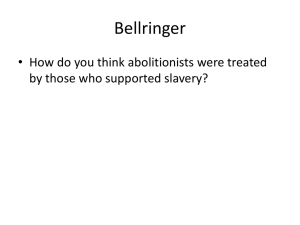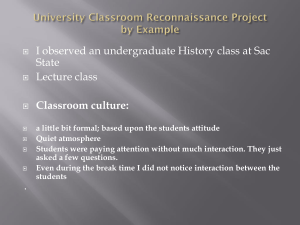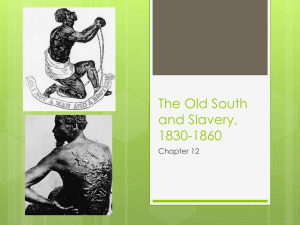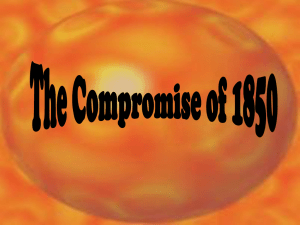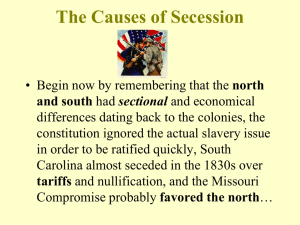Decline Thesis
advertisement
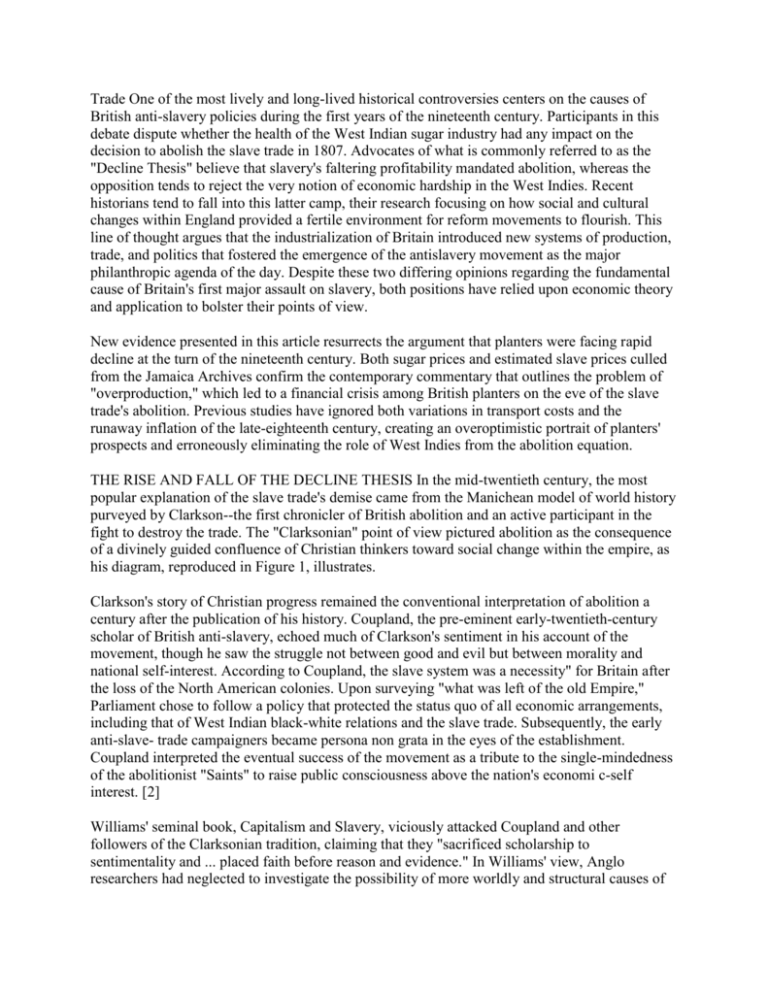
Trade One of the most lively and long-lived historical controversies centers on the causes of British anti-slavery policies during the first years of the nineteenth century. Participants in this debate dispute whether the health of the West Indian sugar industry had any impact on the decision to abolish the slave trade in 1807. Advocates of what is commonly referred to as the "Decline Thesis" believe that slavery's faltering profitability mandated abolition, whereas the opposition tends to reject the very notion of economic hardship in the West Indies. Recent historians tend to fall into this latter camp, their research focusing on how social and cultural changes within England provided a fertile environment for reform movements to flourish. This line of thought argues that the industrialization of Britain introduced new systems of production, trade, and politics that fostered the emergence of the antislavery movement as the major philanthropic agenda of the day. Despite these two differing opinions regarding the fundamental cause of Britain's first major assault on slavery, both positions have relied upon economic theory and application to bolster their points of view. New evidence presented in this article resurrects the argument that planters were facing rapid decline at the turn of the nineteenth century. Both sugar prices and estimated slave prices culled from the Jamaica Archives confirm the contemporary commentary that outlines the problem of "overproduction," which led to a financial crisis among British planters on the eve of the slave trade's abolition. Previous studies have ignored both variations in transport costs and the runaway inflation of the late-eighteenth century, creating an overoptimistic portrait of planters' prospects and erroneously eliminating the role of West Indies from the abolition equation. THE RISE AND FALL OF THE DECLINE THESIS In the mid-twentieth century, the most popular explanation of the slave trade's demise came from the Manichean model of world history purveyed by Clarkson--the first chronicler of British abolition and an active participant in the fight to destroy the trade. The "Clarksonian" point of view pictured abolition as the consequence of a divinely guided confluence of Christian thinkers toward social change within the empire, as his diagram, reproduced in Figure 1, illustrates. Clarkson's story of Christian progress remained the conventional interpretation of abolition a century after the publication of his history. Coupland, the pre-eminent early-twentieth-century scholar of British anti-slavery, echoed much of Clarkson's sentiment in his account of the movement, though he saw the struggle not between good and evil but between morality and national self-interest. According to Coupland, the slave system was a necessity" for Britain after the loss of the North American colonies. Upon surveying "what was left of the old Empire," Parliament chose to follow a policy that protected the status quo of all economic arrangements, including that of West Indian black-white relations and the slave trade. Subsequently, the early anti-slave- trade campaigners became persona non grata in the eyes of the establishment. Coupland interpreted the eventual success of the movement as a tribute to the single-mindedness of the abolitionist "Saints" to raise public consciousness above the nation's economi c-self interest. [2] Williams' seminal book, Capitalism and Slavery, viciously attacked Coupland and other followers of the Clarksonian tradition, claiming that they "sacrificed scholarship to sentimentality and ... placed faith before reason and evidence." In Williams' view, Anglo researchers had neglected to investigate the possibility of more worldly and structural causes of slavery's destruction. Williams explained that previous studies had artificially inflated the importance of the sugar industry in order to glorify the achievement of the abolitionists, thereby failing to recognize the underlying materialist causes behind the prohibition of slave trading. Earlier historians missed the fact that the new capitalistic economy had no need for the arcane labor system of slavery. The success of British free trade following the American Revolution, coupled with the publication of Adam Smith's The Wealth of Nations (Glasgow, 1776), exposed the fact that the riches generated by the mercantilist system were actually a fiction on the empire's balance sheet. Furthermore, a decline in both the importance and profitability of the sugar industry made the slave system an outdated mode of production in a burgeoning capitalistic economy. The cessation of the British slave trade had little to do with the evangelical abolitionist movement in Britain and everything to do with the faltering profitability and political influence of West Indian sugar producers. [3] Capitalism and Slavery's narrative is a precursor of the world system model of economic development that Karl Marx inspired; the early portion of the book links Britain's wealth to the exploitation of the world's lesser-developed economies. Nevertheless, the heart of Williams' argument that connects abolition and economic decline is based on a neoclassical economic theory. Based on Ragatz's The Fall of the Planter Class, Capitalism and Slavery maintains that the first planters enjoyed tremendous profits because they were early entrants into an industry that was situated to enjoy a long-term rise in demand. The early slaveholders had not only the best soils in the British West Indies but also the protection afforded by the Navigation Acts, which guaranteed high sugar prices and exclusive trading privileges with North American suppliers. Whether by design or by good fortune, the first sugar growers in Barbados, Jamaica, and the smaller sugar islands amassed huge fortunes throughout the 100 years after I650. [4] This trade policy, however, could not protect British sugar growers from increasing competition within the empire. Ragatz suggested that the first blow came at the end of the Seven Years' War, when Britain was poised to expand its Caribbean holdings. Established planters lobbied hard against Britain's acquisition of additional sugar islands during the Peace of Paris. They were successful in keeping Guadeloupe and Martinique under French rule, but they could not prevent the cession of Grenada, the Grenadines, Dominica, St. Vincent, and Tobago to British rule. These new islands with their fresh soil helped to accelerate Britain's expanding sugar economy. McCusker estimates that between 1750 and 1775, British West Indian production more than doubled; the contribution of the ceded islands enhanced production by 20 percent. Grenada alone exported, on average, 12,000 hogsheads per year (a hogshead being roughly 1700 lb during this period) to England after 1770. [5] North American revolutionary politics intensified planters' economic pressures. The American Revolution created a short- term crisis that, in Williams' words, introduced "the first stage in the decline of the sugar colonies." During this period, planters were "entirely cut off from usual Supplies from America." Food, in particular, became scarce, and slaves suffered the worst consequences. Williams highlighted the financial crisis that ensued by noting the high mortality rate of slaves during the Revolution. In Jamaica, 15,000 of them died of famine between 1780 and 1787. This catastrophe was even greater in the Leeward Islands and in Barbados, where the majority of fields were devoted exclusively to sugar production, leaving planters unable to use locally grown provisions to feed their workers. When prices for such goods as flour, Indian corn, and salted meats doubled during the hostilities, most estate owners had to call a moratorium on slavery's century-long expansion. Planter interest in slavery waned du ring the Revolution, and during the first year of warfare, slave traders were forced to sail from island to island with little hope of selling their cargo, despite low prices. [6] For Williams, the importance of the Revolution lay not in its short-term effect, but in how it revealed the inherent weakness of the crumbling mercantilist system and the artificiality of West Indian wealth. The Williams' thesis claims that slavery did not come to an end because of humanitarian or spiritual reform but because of its association with an arcane system of labor that encouraged sugar output to be in excess of demand. The net wealth and profits generated from the Caribbean sugar industry were no longer critical to the empire's economy. Williams accordingly advised researchers to describe facts in ways "that you can touch and see, to be measured in pounds sterling or pounds avoirdupois, in dollars and cents, yards, feet and inches," rather than in moral or spiritual terms. [7] This call for empiricism did not go unheeded. Ironically, many subsequent economic and quantitative studies were highly critical of Capitalism and Slavery. Drescher, the book's most prominent critic, attacked Williams by questioning the basis for the decline narrative. He argued that slavery was hardly a moribund institution in the years following the American Revolution.
